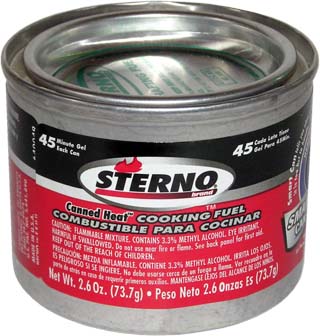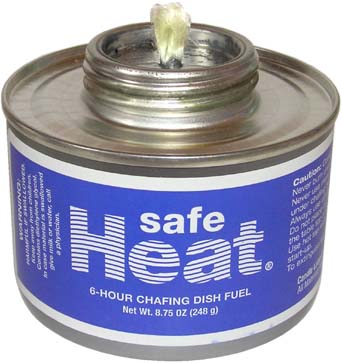| Zen Backpacking Stove Home | |
| Choosing the Right Stove | |
| Cooking Systems | |
| Stove Types | |
| How Stoves Work | |
| Templates | |
|
|||||||||||||||||||||||||||||||||||||||||||||||||||||||||||||||||||||||||||||||||||||||||||||||||||||||||||||||||||||||||||||||||||||||||||||||||||||||||||||||||||||||||||||||||||||||||||||||||||||||||||||||||||||||||||||||||||||||||||||||||||||||||||||||||||
|
|||||||||||||||||||||||||||||||||||||||||||||||||||||||||||||||||||||||||||||||||||||||||||||||||||||||||||||||||||||||||||||||||||||||||||||||||||||||||||||||||||||||||||||||||||||||||||||||||||||||||||||||||||||||||||||||||||||||||||||||||||||||||||||||||||||||||||||||||||
These are popular and easy to find since they are mass produced as chaffing fuels. They don't burn very hot, but are able to warm up food and keep it warm for hours. Jelled fuels is a bit safer than liquid alcohol fueled stoves in that they are less volatile and if tipped over they don't spill flaming fuel everywhere, making them a good choice for young campers or scouts. Unfortunately, gelled alcohol is usually packaged in a can with a small top opening and poor ventilation that only allows for limited burning and may not provide sufficient heat output to cooking with.
Advantages include:
can be found at many grocery, sporting goods, and food services stores
relatively safe to use (low volatility, and spill proof)
resealable containers
good for simmering
crushable and disposable stove
Disadvantages include:
may not be able to achieve temperatures sufficient to boil water or cook food
very slow to boil/cook
need separate pot stand
Note - This is just one of many DIY alcohol stove options. For more information on different options visit Zen and the Art of the Alcohol Stove.
Gel Chafing/Fondue Fuels

Samll 2.6oz Sterno Can
Sterno is a popular brand name in chafing fuels and many other brand names are modeled after or are in fact manufactured by Sterno. It comes in two sized cans with a couple of different top choices. The small and large sized Sterno resealable cans have the same sized top openings and the lids are interchangeable.
There are many different commercial chafing fuels out there and really only differ in can dimensions, metal used for can (aluminum or steel), top opening or style (open, wick, opening size, pressure lid, screw on cap, or pull tab), and fuel ingredients (percentage of methanol, ethanol, and/or diethylene glycol and type of gelling agent and additives).

Diethylene Gycol Fueled Stove
Note - Many of the chafing fuel cans use a wick and diethylene glycol instead of gelled alcohol and may or may not have a resalable top. Diethylene gycol is toxic and is more difficult to light than alcohol, making it better suited for shipping but less ideal for backpackers. Assume that any chaffing fuel with a wick has diethylene glycol until proven otherwise.
|
Brand |
Size /font> |
Dimensions |
Material |
|
2.6oz |
2 1/2" x 2" |
Aluminum |
|
|
7oz (2 Hour) |
3 3/8" x 2 1/2" |
Aluminum |
|
|
Sterno Hot Spot Super Wick |
4 Hour |
3 3/8" x 2 1/2" |
Aluminum |
|
Sterno Stem Wick |
6 Hour |
3 3/8" x 2 1/2" |
Aluminum |
|
Eco-Fuel |
5 hr. Cooker/10+ hr. Warmer |
3 3/8" x 2 3/8" |
|
|
8oz 2 Hour |
3 1/4" x 2 1/4" |
|
|
|
2 Hour |
3 3/8" x 2 1/4" |
Tin |
|
|
518 - 4 Hour |
|
Tin |
|
|
200 - 2 Hour |
|
Tin |
|
|
Safe Heat (Screw top) |
9.3oz 6 Hour |
3 1/4" x 2 1/4" |
Tin |
|
4 Hour |
|
Tin |
|
|
200 gram |
|
Aluminum |
|
|
Easy Heat 2-1-3 |
3.6oz wick |
2 1/2" x 1 7/8" |
|
|
Easy Heat 4-2-5 |
6.5oz wick |
3 3/8" x 1 3/4" |
|
|
Easy Heat 6-3-8 |
9.5oz wick |
3 3/8" x 2 3/8" |
|
|
Greenheat |
350 gram |
|
|
|
Diablo Chafing Fuel Gel |
6 Hour |
|
|
|
FancyHeat Chafing Fuel Gel |
8oz |
|
|
|
Gold Blaze |
8oz |
|
|
|
Dualheat |
9.5oz |
|
|
|
Magic Heat |
10oz 300mL |
|
|
|
Alco-Brite |
16oz |
|
Tin |
|
Sunjel |
13oz |
|
Tin |
Refueling
Gelled chafing fuel can be purchased in large gallon sized containers at food services stores. Note that some gelled alcohol fuels are intended for fire starting or gelled alcohol fire logs and may do be suitable or ideal for cooking with and they may pop, sputter and contain undesirable toxins.
Empty cans may also be refueled with liquid alcohol, but you loose any of the tipping protection provided by gelled alcohol.
Make Your Own Gelled Alcohol Fuel - Canned Heat
Extreme do it yourselfers can make their own gelled fuel at home with by mixing alcohol and calcium acetate (C4H6CaO4).
The following instructions and measurements are from the Montville High School Science Departmental.
Add 25g of crushed chalk or egg shells (calcium carbonate-CaCO3) to 100ml of vinegar (water and acetic acid - CH3CO2H) and stir for about 5 minutes.
This should produce carbon dioxide (CO2), calcium acetate (C4H6CaO4) and water (H2O) plus leave you with some left over chalk (CaCO3). If you are guessing on how much chalk to add, just make sure that there is a little extra after 5 minutes of stirring.
Remove the excess chalk by filtering your mix through some filter paper (coffee filter or napkin can be used).
Set a funnel in a jar, place your filter in it and pour your suspension through it.
Mark the level of your solution in its container and allow your solution to evaporate off about half that volume to remove the excess water.
Place your solution in an oven set on low heat or place it out in the sun to dry. If you went to far - just add the missing water.
Note - if you like, you can dry out your solution completely and store the remaining dried calcium acetate for future use.
If your solution isn't already in the container you want your gel in, then pour it in there now.
Add 30ml of alcohol (ethanol, methanol, or isopropanol) to your solution and watch the gel form. Do not stir.
Once the reaction in complete, pour off any extra fuel.
Y2kSurvivor suggests:
Dissolved calcium acetate solution ratio:
1 part dry calcium acetate (by volume) to 2 parts water
Solution to fuel ratio:
1 part dissolved calcium acetate solution to 4 parts alcohol
Also see:
Canned Heat: Alcohol Gels - University of Wisconsin